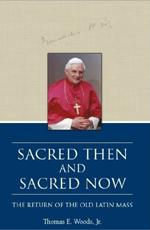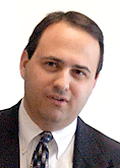 My newest book, Sacred Then and Sacred Now: The Return of the Old Latin Mass, has just been released.
My newest book, Sacred Then and Sacred Now: The Return of the Old Latin Mass, has just been released.
In 1969—70 a new liturgy was introduced in the Roman Rite of the Catholic Church. Far from the minor changes that most bishops had thought they were approving at the Second Vatican Council, the Missal of Pope Paul VI was a sweeping and radical overhaul of the traditional Mass, which was in turn suppressed de facto (though not abolished de jure, as Benedict explains in the motu proprio). Nothing like it had ever been seen in the history of Catholic liturgy, as the man who later became Benedict XVI repeatedly protested.
Even before the new liturgy was fully introduced, the initial changes were enough to make novelist Evelyn Waugh refer to Mass-going as “a bitter trial.” Father C. John McCloskey estimates that hundreds of thousands — I think even more — left the Church in the wake (and as a direct result) of the liturgical reform and its consequences.
Accompanying the new missal were profanations of various kinds. The Church’s extraordinary musical patrimony was abruptly discarded and replaced by a string of forgettable banalities. Church architecture suddenly became weirdly humanistic, with theater-in-the-round seating, denuded sanctuaries, the elimination of altar rails, and the like. Sanctuaries were literally bulldozed so the priest could “face the people” across the altar — despite ancient practice to the contrary, researchers discovered after it was too late.
Whether any of this had any necessary connection to the new missal or was merely an unfortunate byproduct is a contentious issue that cannot be sorted out here. The fact is that this frenzy of “de-sacralization” — to use Benedict’s term for it — compounded the disorientation that the new missal in and of itself would have produced.
Meanwhile, as if straight out of Orwell, the one forbidden thing was the Church’s traditional liturgy.
My book’s title, Sacred Then and Sacred Now, is drawn from Pope Benedict XVI’s letter to bishops that accompanied his 2007 motu proprio liberating the Church’s traditional liturgy. There he rebuked the Orwellian mindset at the heart of those who have taught us to despise the old missal: "What earlier generations held as sacred, remains sacred and great for us too, and cannot be all of a sudden entirely forbidden or even considered harmful. It behooves all of us to preserve the riches which have developed in the Church’s faith and prayer, and to give them their proper place."
Benedict’s move may be the most important papal initiative since Vatican II. I discussed the issue in July on this very site.
Almost immediately, opponents of liberalization, including some bishops, tried to portray what Benedict had done as a grudging allowance aimed merely at old fogies who refused to get with the times. That claim doesn’t survive even chapter one of my book, which synthesizes decades of Ratzinger’s liturgical writings and reveals the Pope to be pointing to the old missal as a treasure to be cultivated, not an annoyance to be kept at arm’s length.
As Benedict said while Cardinal Joseph Ratzinger, "I well know the sensibilities of those faithful who love this [traditional] Liturgy — these are, to some extent, my own sensibilities."
"I am of the opinion, to be sure," Ratzinger wrote elsewhere, "that the old rite should be granted much more generously to all those who desire it. It’s impossible to see what could be dangerous or unacceptable about that. A community is calling its very being into question when it suddenly declares that what until now was its holiest and highest possession is strictly forbidden and when it makes the longing for it seem downright indecent."
Chapter one is filled with quotations like these, that show the depth of the Pope’s commitment to the old liturgy and that describe its de facto suppression as a radical and destructive break with all previous liturgical history.
Without lecturing people, Sacred Then and Sacred Now also makes the case for the traditional manner of receiving Holy Communion, the absence of lay "Eucharistic ministers," and the like. Part of the reason I wrote the book so quickly was to make a vigorous case against introducing abuses from the new liturgy into the old before they had a chance to start.
The book also supplies what I think are fairly strong replies to the typical objections to the old missal — e.g., people don’t speak Latin anymore, the priest should face the congregation, there should be more "participation" by the people, the missal of Paul VI is what Vatican II called for, and the like.
 Finally, the book takes the reader through a tour of the old liturgy — when to sit, stand, and kneel, what the various ceremonies mean, and so on.
Finally, the book takes the reader through a tour of the old liturgy — when to sit, stand, and kneel, what the various ceremonies mean, and so on.
I wrote the book so that it could be read with profit both by the beginner to the traditional Mass as well as the more advanced student. I also intended it to be a book you could give to unconvinced or skeptical friends, lay or clerical, that makes the case for the value of the old liturgy, and can bring them over to the cause as well.



